Global gathering - take a tour of European harvest - Europe
From apples and peppers to chestnuts and truffles, Lucy Kehoe heads to the source for the best of autumn's produce as she takes a tour of European harvests
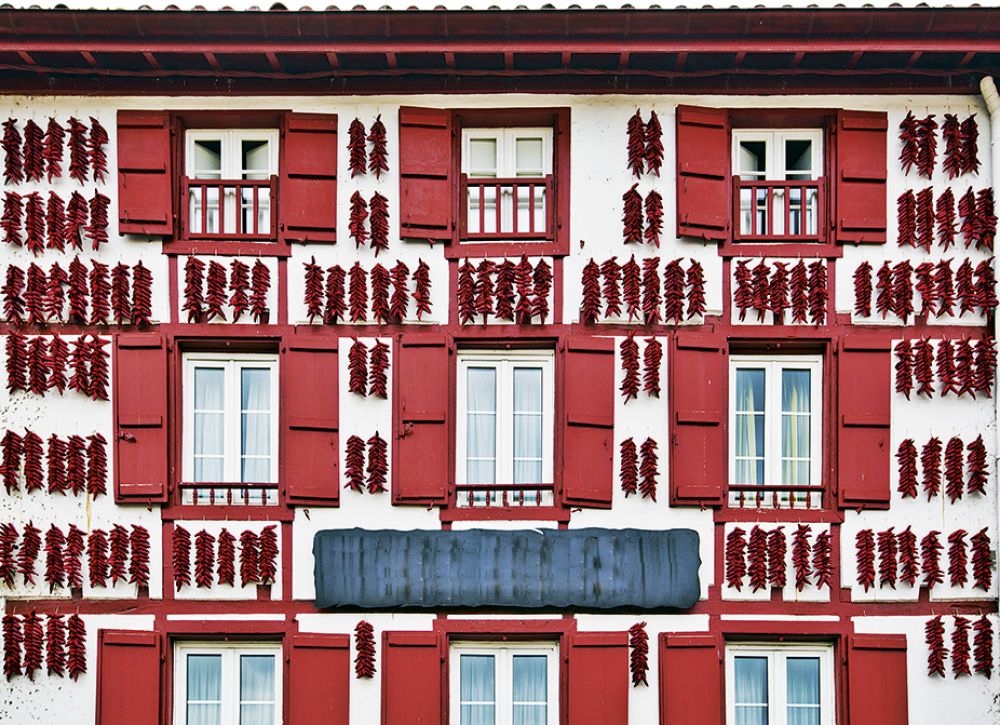
From apples and peppers to chestnuts and truffles, Lucy Kehoe heads to the source for the best of autumn's produce as she takes a tour of European harvests
Under damp autumn dawns, unlikely wildlife prowls the dew-soaked hills of northern Spain's Teruel province. Beneath skies occupied by the majestic golden eagles and mountains populated by sure-footed goats, an abuela ('grandma') scrambles over Europe's best mushroom-foraging terrain, equipped with her sharp knife and an encyclopedic knowledge of the diverse local fungi.
The waterfalls, forests and jagged rocks of Teruel are home to over 20 varieties of edible mushrooms. Pickers from nearby towns rise with the sun to find their favourites, lifting squat ceps, bloody milk caps and the poorly named 'trumpets of death' from the earth with careful fingers.
Don’t expect to meet anyone if you venture into the morning light – the beach-loving crowds that flock to Spain’s east coast don’t venture this far. An autonomous province within Aragon, Teruel is one of Spain’s wettest areas – but that plentiful precipitation creates the ideal environment for the humble mushroom. If you're not confident heading out alone, stop by the tourist office in Albarracín Calle San Antonio 2 to organise a pick with a sure-minded local. Much of the harvest returns to the old town.
All crumbling red-stone walls and snoozing grandfathers at every door, its trattoria menus swell with autumn's arrival. Ceps float in garlicky soup and caps arrive beside partridge or in a red wine-soaked wild boar stew. This is solid country cuisine: slow-cooked lamb and kid are served at Rincón del Chorro while the river trout and venison at La Alcazaba restaurantealcazabaalbarracin.es are both worth ordering. Stay at the homely Casa de Santiago – its top floor offers autumnal vistas across the medieval town's terracotta rooftops.
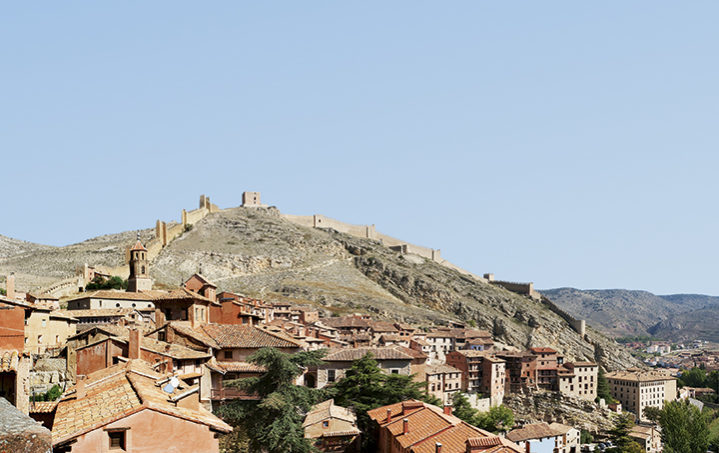
Wafts of nut-infused charcoal smoke arriving on crisp alpine breezes are the markers of October’s entrance into Val Bregaglia. Follow your nose down the hairpin bends leading into the valley and a canopy of fan-like leaves will quickly close in, painting the tarmac with delicate patterns in white wine-coloured light. This is the 'Valley of the Chestnuts', where you'll find Switzerland's – and Europe’s – largest sweet-chestnut forest. As autumn sneaks between the trees, the towns of this Swiss enclave prepare for the month-long Festival della Castagna. Until the early Middle Ages, chestnuts were a staple here, ground down into flour for baking and packed into meat pies.
Today, they're more of a beloved local curiosity, inspiring forest tours, tasting dinners and public ‘bashing' events (where the nuts are freed from their shiny cages). Weekend festivals in Ascona and Valais are announced by the jovial drinking of Dragrà, a chestnut-flavoured beer, as rosy-cheeked families munch roasted nuts with charcuterie and cheese in the Swiss tradition of brisolée. Stroll the Castasegna trail to spot local matriarchs with funnel-shaped baskets, risking their fingertips collecting the treasured nuts. Near Brentan, you'll find a designated public picking site, or you can harvest along main roads. Don't try private groves, though – it risks a stern word from gilet-clad grandmas.
Like the nuts, locals aren't as prickly as they seem – ask for a restaurant recommendation and they'll point you to Ascona's Grotto Baldoria where chestnuts are put to good use in creamy risottos and stews. Solgio's Hotel Palazzo Salis makes a good base. The 17th-century palazzo, with dignified baroque interiors, serves excellent chestnut soup, nut-filled ravioli and würst.
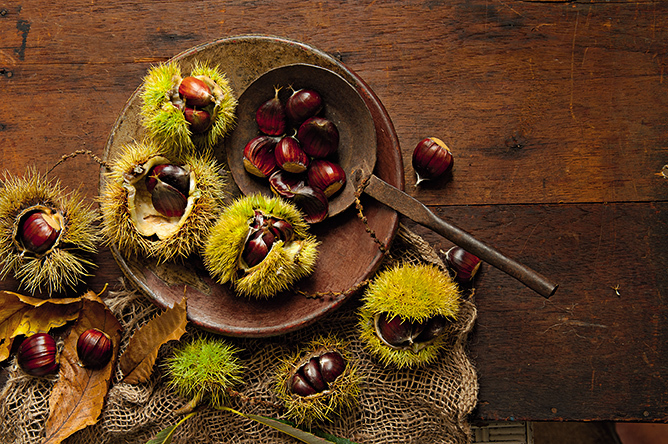
When autumn crests the hilltops of the Douro Valley, a centuries-old process begins. As the morning sun reflects off bronzed vines cascading, like living contours of a map, down the hillsides, a trail of pickers dressed with nifty neck scarves and straw hats, begins to snake its way across undulating hills. They're picking the region's grape harvest, gently laying bunch after bunch into precariously piled plastic crates.
Most of the fruit is destined for port production, and the cool cellars of Porto, but some, too, will make its way into tables wines, producing the region’s tannic, burly reds and crisp-edged whites, all laced with mineral notes that match the rocky soil. If you’re keen to get your fingers stained, winery Quinta da Pacheca offers a full day of harvesting, complete with a mid-morning mata bicho meal of onion soup and baked sardines. Afternoons are spent dying your calves purple stomping in the vast lagares vats. If you'd rather observe from a safe distance, the wine-tasting terrace at Quinta Nova de Nossa Senhora do Carmo looks out across the company's 41 vineyards. The renowned estate has been transformed into a characterful wine hotel deep between the vineyards. Other popular tasting spots include the Taylor-owned Quinta de Vargellas and Quinta do Portal which is smaller and family-run.
At the valley's centre, the meandering Douro runs slowly, its waters heavy with the burden of wooden rabelo boats. Its silken surface is a reminder of Portugal’s past – and its cuisine, filled with borrowed flavours from across the seas. Take a riverside seat at DOC to sample it. You’ll be able to uncork the valley’s best bins from a 600-strong list and feast on the likes of veal carpaccio, morecela sausage and cod. The trick is not to ask about the grapes in the glass – like its food, Douro wine is all about getting the essence of the land and its history in the bottle.
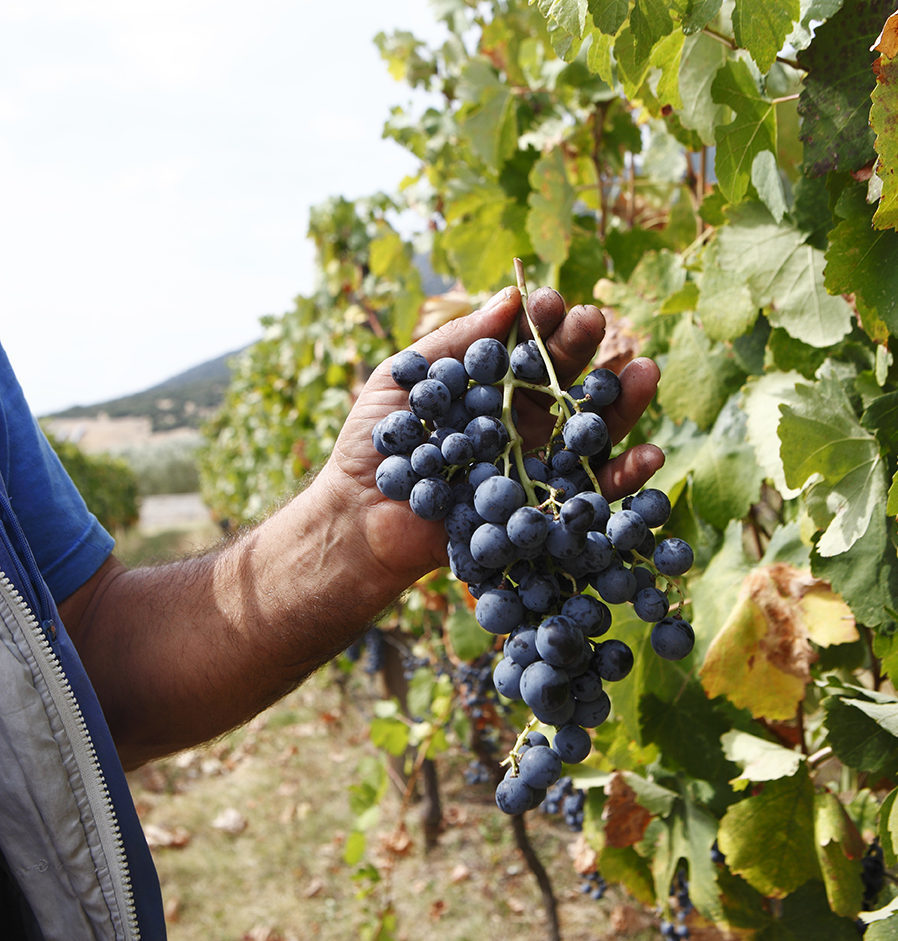
Red – it’s everywhere in the French Basque region: terracotta roofs, scarlet café awnings and oxblood window shutters distinct against the region’s chalky-white buildings. Head up into the foothills of the Pyrenees throughout October and the colour even infiltrates the fields as the piment d’Espelette season peaks.
This brilliantly red pepper sits at the heart of culinary culture in the villages of the French Basque. Made up of three provinces, it's a region that's often eclipsed by its fiery Spanish neighbours. But the French side has a strong culinary pride, and these red capsicums are its signature seasoning. France’s only Appellation d’Origine Protégée (AOP) spice, it's grown in 10 designated communes, but most proudly associated with the town that shares its name: Espelette. By early autumn, workers pack out rocky fields around the town, harvesting from late August until early December. By October, the drying process is in full flow, piment d’Espelette dangling on strings from the doorways of every house, garlands of varying red shades hung like curtains and banners down the white walls. The peppers unseat black pepper as a day-to-day spice in local kitchens, used in local dishes like sautéed peppers and tomatoes with egg, piperade, and fresh chillies thrown into simmering minced veal, axoa.
At the seaside hotel La Réserve in nearby Saint-Jean-de-Luz, Pierre Boffo generously scatters peppers through a menu showcasing the region's larder: a gazpacho of watermelon and Bastelica tomatoes tingles with their warmth. Back in Espelette, the red-timbered Hôtel Euzkadi serves daily specials of fois gras with chilli and classic piperade starters topped with house-made bacon, ventrèche. When the month draws to a close, the town erupts into one final, fiery fiesta Join the weekend crowds and pick up a 20-long cord of dried espelette or some jars of the russet red powdered chilli.
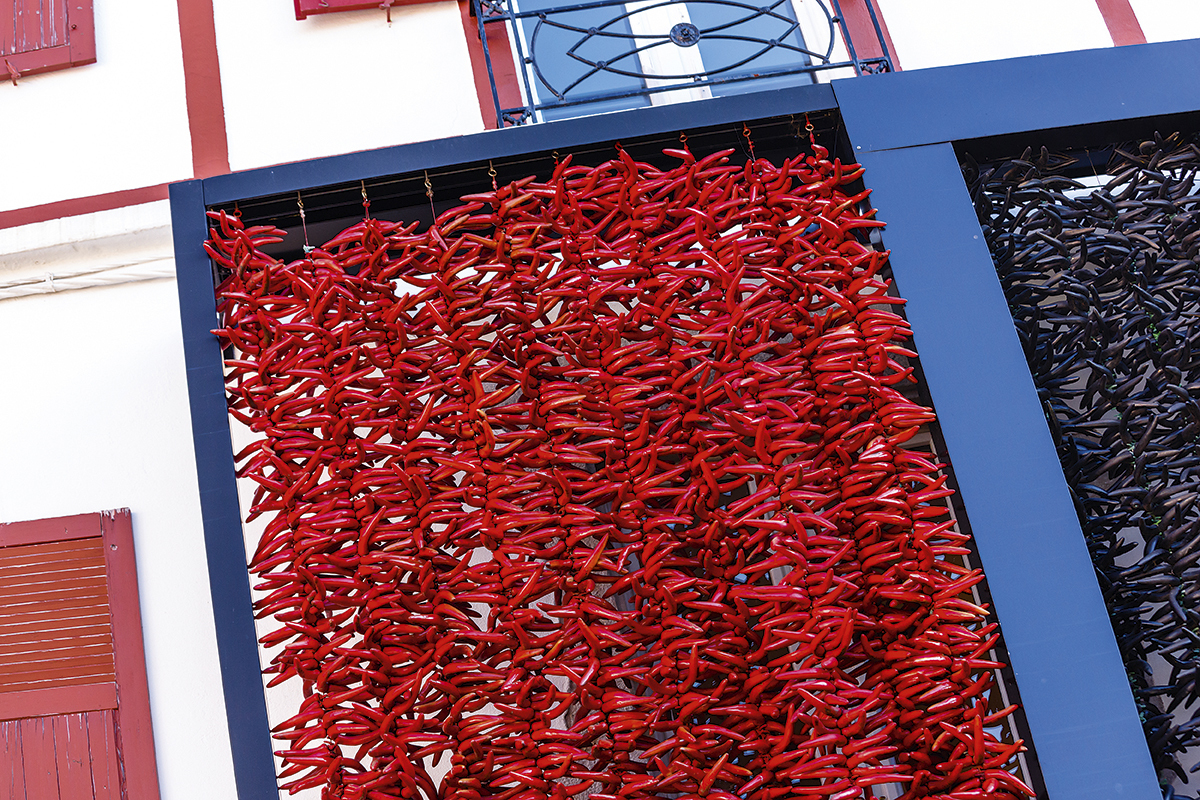
In the dappled woods that sprawl between the Piedmont towns of Asti, Alessandria and Alba, autumn’s soundtrack is a pad of paws against damp earth and a quiet pant as a wet nose follows the indiscernible aroma of truffles through the misty forests.
Accompanied by their illustrious truffle-hunting hounds, the region’s tartufai (or trifolai in the local Piedmontese dialect) walk through the woods from October to late December, searching for their ‘white gold’. White winter truffles are the fruiting bodies of a mycelium and in the Langhe region, the fruits are exalted for their sweet, delicate flavour. From October to 27 November, the symmetrical cloisters of Alba’s Cotile della Maddalena become populated with peaked marques as dozens of truffle dealers hawk the precious harvest with evangelical zeal.
Watch out for imposters here: as Alba’s fame has grown, some flavour their honey, oils and pastes with less-potent summer truffles. White truffles, unlike their black counterparts, are best served raw and you’ll most likely encounter them shaved delicately over dishes. They lose flavour when subjected to heat. For locals, the preferred vehicle for appreciation is egg yolks, where a high fat content captures the earthy flavour molecules,
amplifying the heady aroma and velvety mouthfeel. Head to the osteria La Piola around the corner from the market to try a bowl of the local tagliatelle-style noodles wrapped within a creamy, cheese and egg sauce, tajarin. Every plate is finished with a cloud of white truffle shavings. Part-owned by the winemaking Ceretto family, a glass of local barolo offers an ideal accompaniment to the dish.
If you’re hoping to get into the woods, ignore the market season and arrive later, towards December, when the foraging trade quietens and the hotel prices drop a little. Local trackers might be resistant to revealing their hallowed hunting grounds but they’ll happily tell you that the best truffles are found when the cold weather arrives. In the vineyard-ringed hilltop area of Mombaruzzo, the elegant hotel La Villa offers an afternoon experience with a truffle hunter and his hound on a private reserve nearby. On return, you can enjoy a truffle-infused dinner from the hotel’s resident chef, Matteo Rossi. Nights are cool at this time of year, so if you’re not planning to spend them out in the woods with stealthy truffle seekers, snuggle down in a sturdy four-poster bed within the 16th- century palazzo's thick stone walls.

Lower Normandy’s Pays d’Auge is a land stuck in sepia, all mellow golden meadows, slumping hills and mist- cloaked apple orchards. This is farm country, a patchwork of over 43,000 holdings that wear the trappings of arable history, complete with rusted ploughs and patina-coated hoes leaning against the half-timbered walls of every pressoir. Mythology has it that apples were crowned the region’s fruit of choice when the country's beloved vines wouldn’t take in the cool air. We can only thank the weather: along the 40km of road that forms the Cider Route, every kind of apple-based tipple is produced (and imbibed) with sheer abandon. At restaurants, the conflicting sides of French cuisine face-off over frothing jugs of sweet cidre doux and dry cidre brut. Whether feasting on poached monkfish wrapped in a garnish of lime, lovage and coriander at Honfleur’s celebrated SaQuaNa or sitting down to four stomachs of a cow simmered in cider and cream, tripes à la mode de Caen, at a rustic Rouen bistro, you’ll find the fruit populating every table. It’s rare to find a menu not bookended by a glistening tarte aux pommes.
The tempting fruit even steals into the region’s best stays. Pays d’Auge’s hotels possess a certain haughty elegance, resplendent with manicured gardens, timbered turrets and no-nonsense spas reminiscent of German baths. At the spa of Relais & Châteaux’s La Ferme Saint Siméon signature pampering treatments use exclusively apple-based products.
After your spa visit, ask for a nightcap at the hotel bar and your evening will belong to pommeau – a teasing blend of gentle apple juice with the fiery aftertaste of brandy. That, or you’ll be sipping on its sophisticated sibling Calvados. Distilled by just 350 producers who own the right ‘to boil’, this aged apple brandy is held in oak casks for anywhere from two to 50 years, drawing a deep tannic colouring and a complex body from the wood. Traditionally a postprandial tipple, it's common to find distinguished Normans drinking it by the thimble between courses. You can try a taste of the spirit at the Vimoutiers Apple Festival, which arrives in the town on the third weekend of October every year. Thronged by a diverse crowd of producers selling everything from softly carbonated cider blends to organic, single-fruit bottles, it’s the best way to explore the region’s 800 or so apple varieties. Watch the neckerchiefed crew hand-turning a central press in the town square or assimilate with the culture by sipping the local liquids alongside the locals.
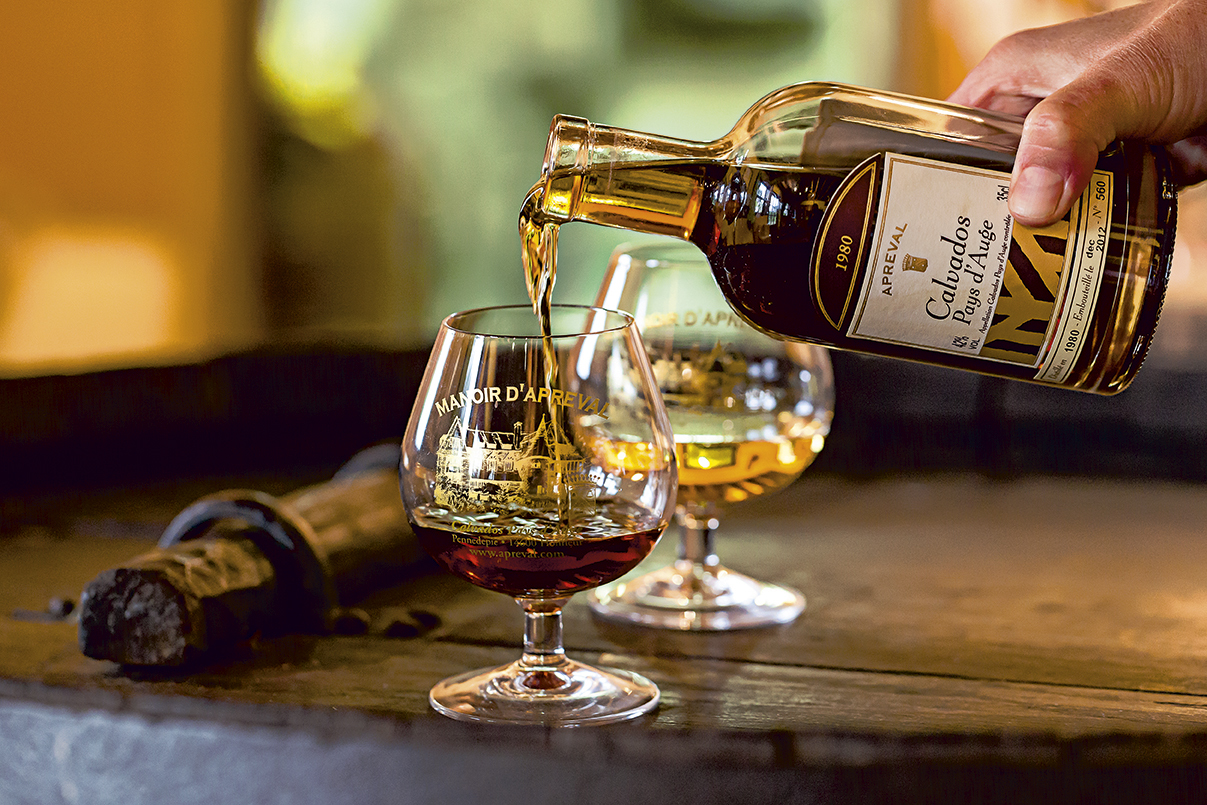
Subscribe and view full print editions online... Subscribe